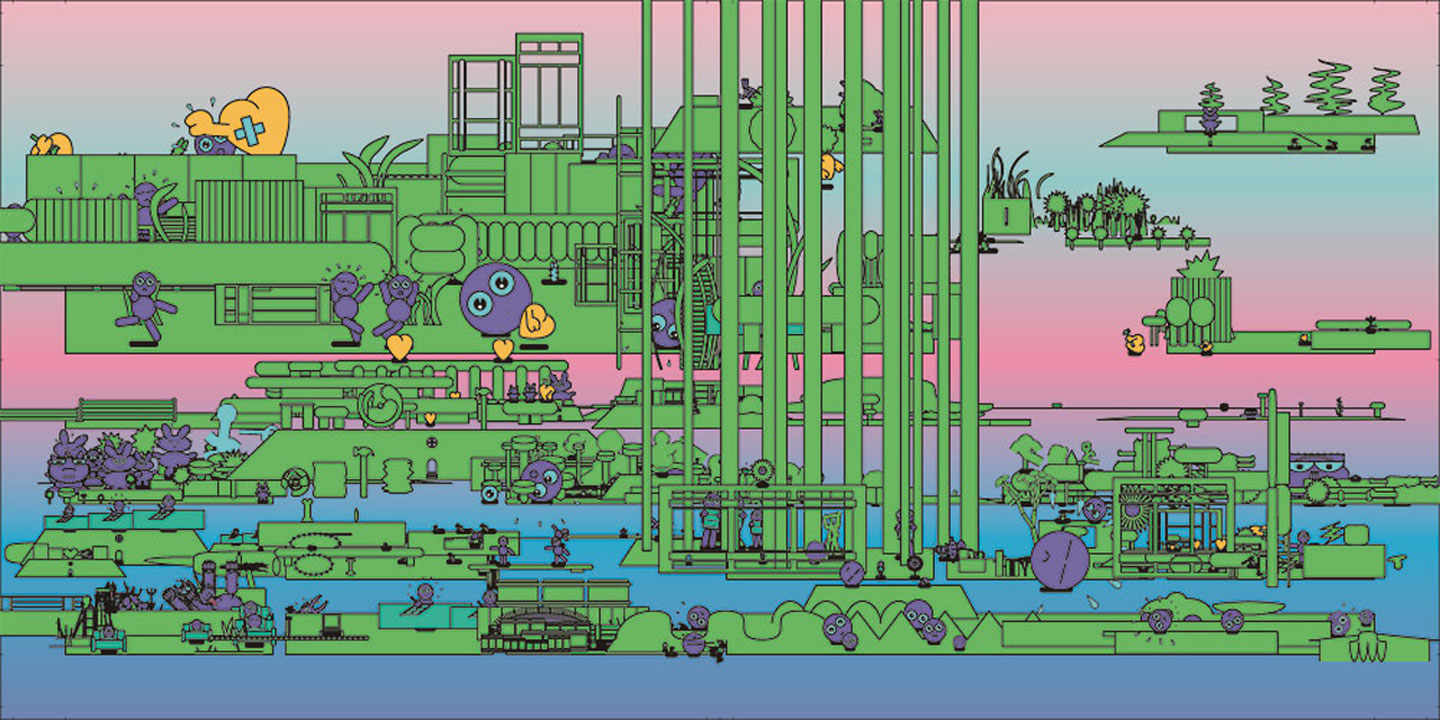John Pound, the artist who helped create Garbage Pail Kids, has been toiling away in relative obscurity, building randomized, computer generated comic strips since the 1980s. After purchasing his first computer, Pound became fascinated with digital art, and learned the programming language PostScript, which he still uses to create his works today. Wired writes:
He coaxed PostScript to draw some rudimentary scenes. They were just a few shapes against a horizon line at that point, but the artist found the results fascinating nonetheless. While plenty of artists were using computers to create impressive abstract visuals, he hadn’t really seen anyone else trying to create representative, figural works. “I just became intrigued,” he says. “I thought, ‘man, this is fun. I want to see what else I can draw with code.’”

For these, Pound will set his program on a certain path, have it generate one or two hundred works, and send the resulting PDF to an on-demand printing service to create a physical document of the work. He makes one copy of each, for himself. He’s currently working on sketchbook number thirty.



